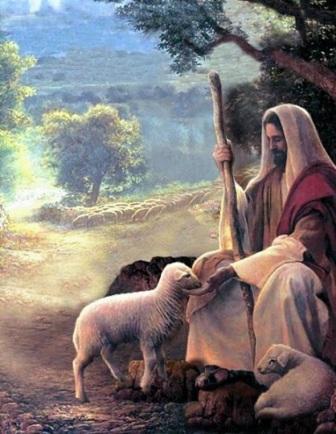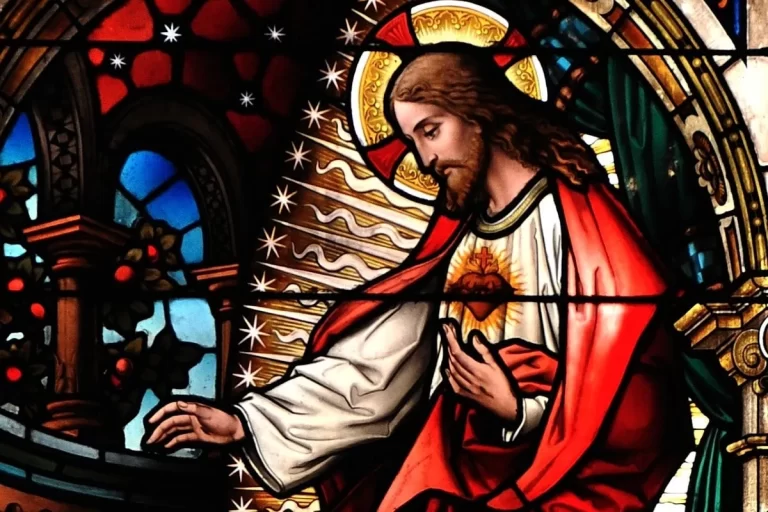Learn all about the Gospels that tell the story of Jesus
The Gospels are writings that clearly relate the life and death of Jesus. It should be noted that they all do it from a different point of view but considering the same idea. Learn more about them in the next post.
The gospels and their symbols
The gospels, or equally the four evangelists, are the creators of these stories:
The man or a blessed messenger is related to Matthew, since his Gospel begins by noting the fatherhood of Christ, the Son of Man; The lion is related to Mark, since his Gospel begins by speaking of John the Baptist, “Voice that cries in the desert”, that voice would resemble that of the lion.
The bull is identified with Luke, since his Gospel begins by discussing the penance of Zacharias, father of John the Baptist. (See Article: Miraculous Prayer of the Holy Spirit )
The falcon symbolizes the figure of John. The falcon is considered the “creature that covers the base of sunlight”, an image of flame, elevation, depth and light; this creature has incoming sight, similar to the “all-seeing eye”, apt to transcend the mists and gaze at the sun, thus symbolizing every extraordinary expression, strength, thought, genius and the most amazing courage.
It is the image of deep ascent, which keeps him elevated in stature. The Gospel of John, which Clement of Alexandria called the “profound gospel,” is the deepest, most emblematic, thoughtful, and religious of the four, and in that sense, the one that towers over the others.
Matthew
Gospel named after Matthew, a homework collector who left his workplace to persecute Jesus, was composed around 80 AD. what is more, it basically targets Christians of Jewish origin.
Given the idea of beneficiaries, Matthew as often as possible makes statements in the Old Testament messages and relies on them to show that God’s disposition informed by the prophets comes to the full satisfaction of the individual and the work of Jesus.
He is the “Son of David”, the “Agent” to forgive his people, the “Son of man” who will show himself as an all-inclusive judge, the “Lord of Israel” and the unsurpassed “Son of God”. Matthew also applies to Jesus, the prophets of Isaiah, about the “Enduring Servant”, who transmits our deficiencies and illnesses to us.
This evangelist gives exceptional meaning to the lessons of Jesus and brings them together in five talks, which are structured like the plot of his gospel and are surrounded by the same number of areas. The central theme of these addresses is the Kingdom of God.
In them, Christ appears as “the new Moses”, who brings the Law of the Old Covenant to its fullness. It is also the “Ace”, who instructs “as someone who has a specialist” the “equity” of that Kingdom introduced and announced by him.
The Gospel of Matthew has been properly called “the Gospel of the Church”, due to the predominant work of life and the association of the network accumulated for the sake of Jesus. This group of people is the new People of God, where the risen Lord shows his essence and transmits it to all men.
frames
This Gospel was made by a supporter or, more precisely, a “translator” of the apostle Peter, whose full name was John Mark. It is the most experienced, the first to be expressly declared, around the year 70 of our time, and it is also the shortest.
As he addresses Christians from agnosticism or primitive times, which did not know the Jewish traditions, Mark clarifies them and also interprets the Aramaic expressions that he sometimes uses. His style is enthusiastic and well-known, and charged with immediacy, even though his language is poor and simple.
The Gospel contains a couple of talks and is more interested in the activities than in the words of Jesus. Rather, the narratives create with full subtlety, and in them Jesus appears with the responses of an individual.
The story particularly presents the humanity of Jesus and, starting from it, continually impels us to find in him the Son of God. Since behind his person there is an incredible “mystery”, the “messianic” mystery, which is discovered in his death and resurrection.
Right on the cross is the answer to the extraordinary latent investigation throughout this entire Gospel: “Who is Jesus of Nazareth?” Certainly, the sublime Messiah is not what his counterparts expected, yet they executed him.
The cross was the restricted method of reaching the resurrection. We are fully called to follow him in this way, to see more and more deeply “the Good News of Jesus, Messiah, Son of God”, which Mark conveys to us so freshly and simply, as a prayerful explanation of the main statement of the Gospel.
Luke
It was established by a traveling companion of the apostle Paul, some fifty years after the disappearance of Jesus, and initially framed a whole with the book of the Acts of the Apostles. Luke was not of Jewish roots, and his work is essentially coordinated with Christians who, similarly to him, originated in the agnostic world.
In the prologue to his gospel he alludes to the path to reading, oral transmission, and composition that preceded the concluding piece of the gospels.
One of the parts of the Good News that Saint Luke most needed to present is the pervasive character of salvation. Jesus Christ, as a result, is the Savior of the whole world, and God needs all men to be saved from him. For him there are no benefits of race, nationality, culture or social class.
Also, this Gospel is appropriately called “Good News of Mercy.” Luke always knows Jesus for us as the person who “came to seek and forgive what was lost.” God is for him, most importantly, the benevolent Father who goes out to meet his lost young women and is filled with happiness when he discovers them once again.
Be that as it may, the “Good news of benevolence” is, moreover, a Gospel that requests. Its creator demands the call to transformation, that is, to difference throughout daily life, as a crucial condition to achieve salvation.
The product of that change is the delight experienced by people who trust in the Good News and fall for it. That is the reason why Saint Luke presents the activity of the Holy Spirit, which is the source of genuine satisfaction.
Juan
The fourth Gospel contrasts sharply with the last three, both in its artistic structure and in its content. Christian convention attributes it to the apostle John, who is related to “the devout whom Jesus adored,” and there are some signs in a similar Gospel that authenticate this attribution.
In any case, the last composition of the book is the consequence of a long elaboration in which the devotees of the Apostle also mediated. The work was completed around the year 100 and had as rapid beneficiaries the group of Christians in Asia Minor.
The Gospel of John revolves around a central theme: Jesus is the one sent by God, his insurmountable Word, which resulted in these current circumstances of the world to make us know the Father.
More solicitously than the various evangelists, John underlines the restriction between Jesus – the “Light”, the “Way”, the “Reality” and the “Life” – and the people who will not put actions on him, for the most part assigned by him. the nonexclusive name of “the Jews.”
Jesus did not come to “judge” the world, but to forgive it. Basically by showing himself to men, he puts them before a choice: remain in their own “darkness” or put actions in the “light”.
He who does not trust Jesus “henceforth” is condemned, while he who has faith in him “has just” gone from death to life and has life without end.
In contrast to the other Gospels, which note a solitary “ascent” of Jesus to Jerusalem, this Gospel discusses three Passovers celebrated in the Holy City. Furthermore, virtually all of the Lord’s overt action occurs within the formal structure of some Jewish occasion.
Instead of the Kingdom anecdotes used as correlations, so normal for different Gospels, John uses short and expressive anecdotes with purpose, for example, that of the vine and the branches and that of the great Shepherd.
Likewise, he uses different “images” to explain the individual of Jesus and the products he gives to men: particularly “water” and “bread” serve him to make a true “holy catechesis” on Baptism and the Eucharist or current religious.
The creator of this Gospel continually returns to similar themes, creating and developing them over and over again. In each of these themes is contained the whole secret of Christ. In any case, more than amazing “realities”, what interests him and needs to highlight is the “meaning” they contain and that no one but trust can find.
From that point of view, John translates the works and extends the talks of Jesus, due to a long and deep thought. His central objective is to lead us to eternal Life, which includes knowing the “main genuine God” and his “Emissary of him, Jesus Christ”. The “Deep Gospel” has been appropriately called the Gospel of John.
parables
They are not stories, in light of the fact that they do not include species characters with human qualities or moral stories, since they depend on tenable certainties or perceptions of nature, which most of these components of everyday life have. (See Article: The Bible )
The anecdotes are contained in important stories, although they can also be found in other writings, for example, that of Thomas and John.
The reason for the Jesus stories is to train how an individual must act in order to enter the Kingdom of Heaven, and they generally uncover its riddles as well. In some cases, Jesus used the stories as persuasive weapons against religious and social pioneers, for example, the parable of the Pharisee and the tax collector and the parable of the two boys.
Jesus says that he shows illustrations that are used to understand his message only by people who have recognized God in their hearts, so that people who have “hardened their hearts” and “closed their eyes” cannot understand him.
The Good Samaritan
The illustration of the Good Samaritan is one of the best known stories of Jesus, related to the Gospel of Luke. It is seen as one of the most sensible and revealing illustrations of the encouraging strategy used by Jesus of Nazareth, an expressive and poignant case of the message of solicitation from him.
The story is described by Jesus himself to show that kindness and justice are the ideals that will lead men to purity and benevolence.
It also indicates that satisfying the actual intent of the law, love, is substantially more significant than satisfying the stated purpose of the law. In this anecdote, Jesus expands the meaning of neighbor. The decision of the figure of a Samaritan, considered unorthodox for the most universal parts of the Hebrew religion, serves to reclassify the idea of neighbor that was later addressed.
Jesus, through this anecdote, demonstrates that trust must be shown through works, reforming the idea of trust in Jewish religious life, among which are, for example, the Pharisees whom Jesus calls “frauds” in some events for their extreme connection with the declared objective of the law and their neglect to satisfy the real purpose of the law.
At this, a specialist in the law appeared and, to test Jesus, put this question to him:
“Lord, what do I need to do to acquire eternal life?”
Jesus replied:
“What is written in the law?” How would you translate it?
accordingly, the man quoted:
– “Love the Lord your God with all that is in you, with all your being, energetically and with all your brain”, and: “Love your neighbor as yourself”.
“Everything around responded,” Jesus said. Do that and you will live.
But he needed to legitimize himself, so he asked Jesus:
– And who is my neighbor?
Jesus replied:
“A man was going down from Jerusalem to Jericho, and he fell under the control of thugs.” They took off his clothes, beat him and left, leaving him half dead.
It would seem that a minister was going down a similar path who, when he saw it, turned aside and continued with a long time. So also a Levite went to that place and, seeing him, he turned away and continued for a long time.
But a Samaritan who was making a trip went to where the man was and, seeing him, showed compassion for him.
He came over, healed his wounds with wine and oil, and sold them. At that time she mounted him alone, took him to a settlement and treated him.
The next day, he took out two silver coins and offered them to the owner of the convenience. “Deal with me,” he said, “and whatever you spend in excess, I’ll pay you back when I get back.”
Which of these three do you think proved to be the neighbor of the person who fell under the control of criminals? “The one who showed compassion for him,” said the master of the law.
“Go to that point and do the same,” Jesus finished.
The Good Shepherd
Truly, truly, I tell you that he who does not enter through the entrance of the fold, but climbs up again, is a criminal and a thief.
In any case, the one who enters through the entrance is the shepherd of the sheep.
To him the caretaker opens, and the sheep hear his voice; He calls his sheep by his name and leads them outside.
When he draws his own, he goes before them, and the sheep follow him because they know his voice.
But they won’t chase after a stranger, however they will run away from him as they don’t have the slightest idea about the voice of strangers.
Jesus addressed them through this helpful anecdote, but they did not understand what he was saying.
Then Jesus said to them once more: Truly, truly, I tell you that I am the entrance of the sheep.
All those before me are thugs and thieves, yet the sheep passed them by.
I am the entrance; in case someone enters through me, he will be saved; and comes and goes and discovers grass.
The thug has just taken, murdered and devastated; I have come to have life, and to have it fully.
I am the great shepherd; The great shepherd gives his life to the sheep.
But he who is a worker and not a shepherd, who is not the owner of the sheep, sees the wolf coming, and hands over the sheep and runs away, and the wolf seizes them and scatters them.
He runs away in light of the fact that he works on deadlines and doesn’t care about the sheep.
I am the great shepherd, and I know my sheep and mine know me,
just as the Father knows me and I know the Father, and I give my life for the sheep.
I have other sheep that are not from this overlap; Also, I need to take them with you, and you will listen to my voice, and you will be a group with only one pastor.

Hello! Let me enthusiastically introduce myself as a dedicated blogger fueled by an intense passion for meticulously crafting insightful and well-researched blogs. My mission revolves around providing you, dear readers, with a veritable treasure trove of invaluable information.






